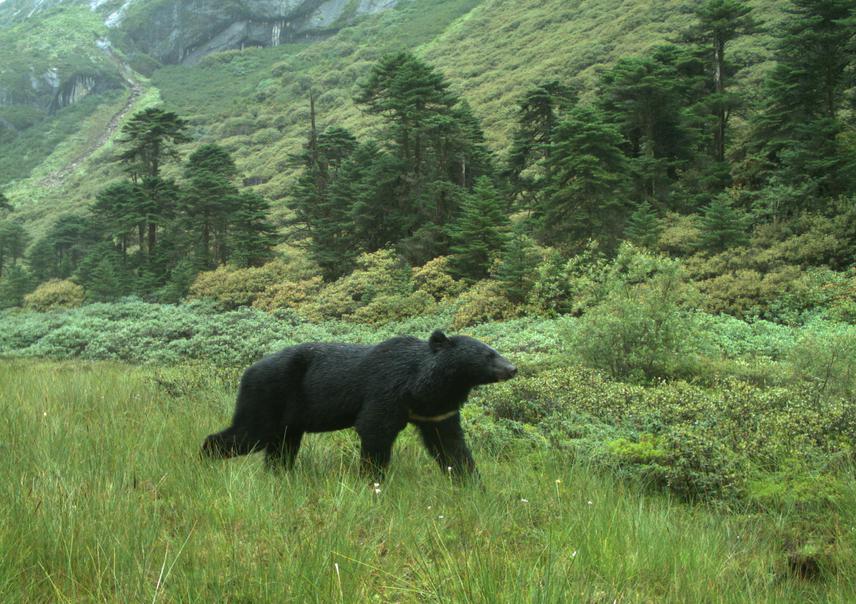Letro
Other projects
26 Mar 2018
Assessing Structural Connectivity of a Biological Corridor for Wildlife Movement between National Parks in Bhutan
The aim of the project is to see the distribution of Himalayan Black bear in JSWNP. We will also assess the status of Human-Bear Conflict there by relating the occurrence of Himalayan Black bear to conflicts, thereby ascertaining conservation needs.

Bear on Camera.
The Himalayan black bear, Ursus thibetanus is widely distributed throughout the Jigme Singye Wangchuck National Park (JSWNP), Bhutan. It is listed Vulnerable by the International Union for Conservation of Nature (IUCN) and Forests and Nature Conservation Act (FNCA) 1995 of Bhutan protects it under Schedule-I species. Despite being totally protected, little is known about its distribution and conservation threats. The present study intends to conduct thorough field study in JSWNP, to document its ecological distribution through sign surveys and camera trapping. The project will also assess status of Human-Bear conflicts in JSWNP and measure conservation threats for priority conservation recommendations.
Through rigorous field surveys, we will gather enough information to map the distribution of bear in the park. As such, we would be able to ascertain the extent of occurrence of Himalayan Black Bear in the park, thus impacting in park zoning. One of the most important component of the current project is to interact with people to know about the prevalence of Human Bear conflict, the extent of damages, people’s response to conflict, and understanding their perception towards bear conservation keeping in mind the provisions of forest acts. This project is a perfectly depicts the state of co-existence between nature and human communities.